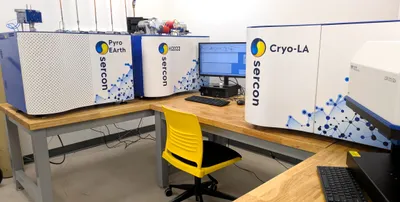
Radiocarbon dating, also known as carbon-14 dating, is a radioactive decay-based method for determining the age of organic remains that lived within the past 50,000 years.
Most carbon-14 is created from nitrogen-14 in the earth’s upper atmosphere as a consequence of cosmic ray bombardment. It is one of several similarly formed cosmogenic nuclides. Newly formed carbon-14 atoms oxidize to carbon dioxide and become thoroughly mixed with the other atmospheric gases, through atmospheric dynamics. Upon reaching the earth’s surface, a small percentage of carbon-14 containing carbon dioxide is taken up by plants and then incorporation into plant biomolecules via photosynthesis. It becomes incorporated into the biomolecules of heterotrophic organisms (animals) via the food chain.
The radiocarbon dating method is based on the fact that plant and animal tissue levels of carbon-14 remain relatively constant during life, but taper off at a predictable rate in surviving remains. The half-life of carbon-14 is 5730 years. Typically, traces of radiocarbon can be detected in organic remains up to 50,000 years old.
The TIME Lab offers radiocarbon services to the UArizona and wider community. We currently offer a dating service for a reduced range of sample types as we expand sample preparation services in our new facilities. If you would like items other than: plant materials (including wood); charcoal; or bone, please contact us to discuss options. Otherwise you can submit a radiocarbon order through our online portal:
The TIME Lab is equipped with Sercon HS2022, PyroEarth and Cryo-LA attached to a Teledyne laser ablation system for measuring stable carbon and oxygen isotopes. This system is currently in a testing phase but we intend to offer collaborative opportunities and commercial services in 2026.
